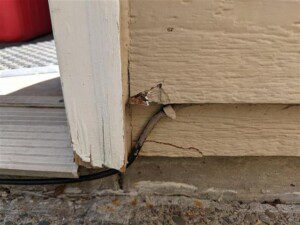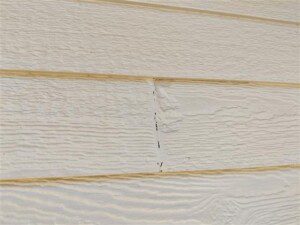Louisiana-Pacific was hit with a barrage of lawsuits in the 1990s over the alleged subpar performance of LP’s faux-cedar Inner-Seal siding. LP Inner-Seal siding was produced from 1985-1995.

Inner-Seal siding was a composite wood product that was pressure-fit together. The boards of this siding were made of stacked, pressed sheets held together by adhesive. The lower lap edge of the siding would fracture, absorb water, and expand as the glue started to degrade over time. The siding became exposed to the outdoors as a result of the delamination. Homeowners found clusters of mushrooms sprouting from the panels’ undersides.
After Hurricane Andrew caused havoc in South Florida in 1992, the product’s fragility became immediately clear. The disintegration process was intensified and accelerated by the high winds that tore through the panels, exposing the underlying oriented strand board (OSB) to torrential rainfall. LP was the subject of more than 37,000 claims, which were ultimately settled for over $1 billion by the business. For its part, the business recovered during the ensuing ten years, despite the fact that LP made no admissions of guilt. LP “got the most money to the most people in the quickest amount of time,” according to the judge who oversaw the case.

Unfortunately, if your house still has LP Inner-Seal siding, you’ll have to pay for replacement costs. Homeowners are no longer permitted to submit a claim to the LP Settlement Administrators following the conclusion of the class action litigation in 2002.
Louisiana-Pacific (LP) still makes siding products. In 1997, Louisiana-Pacific (LP) redesigned its siding and introduced LP “SmartSide.” There have been no significant claims of any problems with this new siding product.
You can find more information about LP Inner-Seal siding in the following video:
